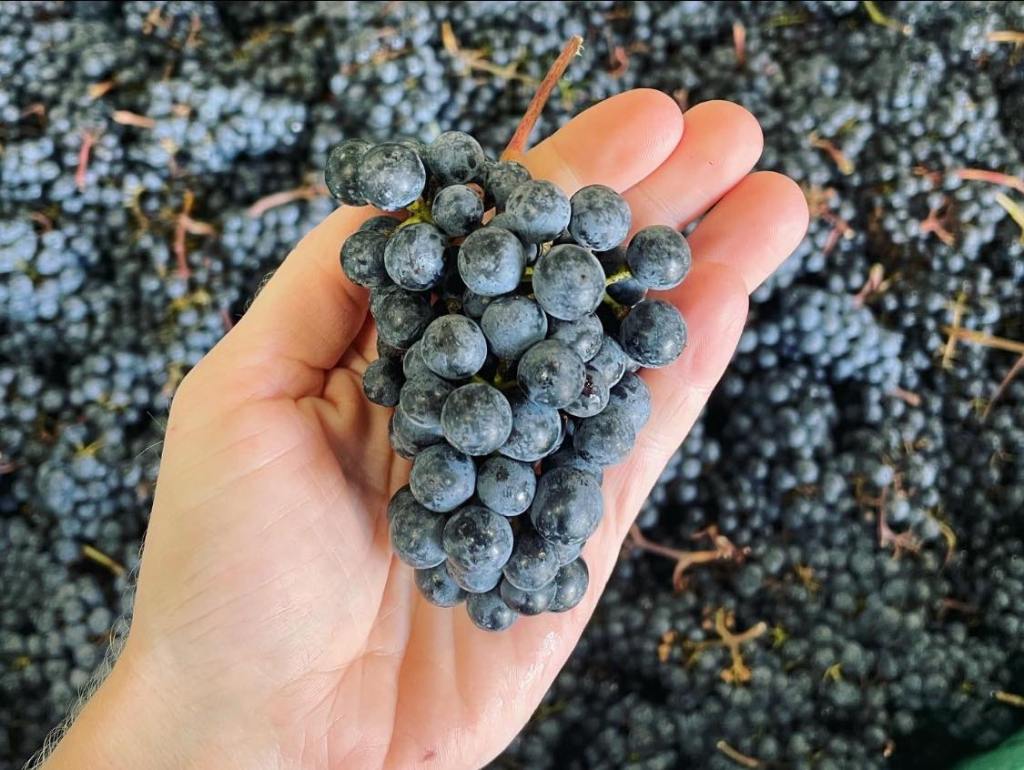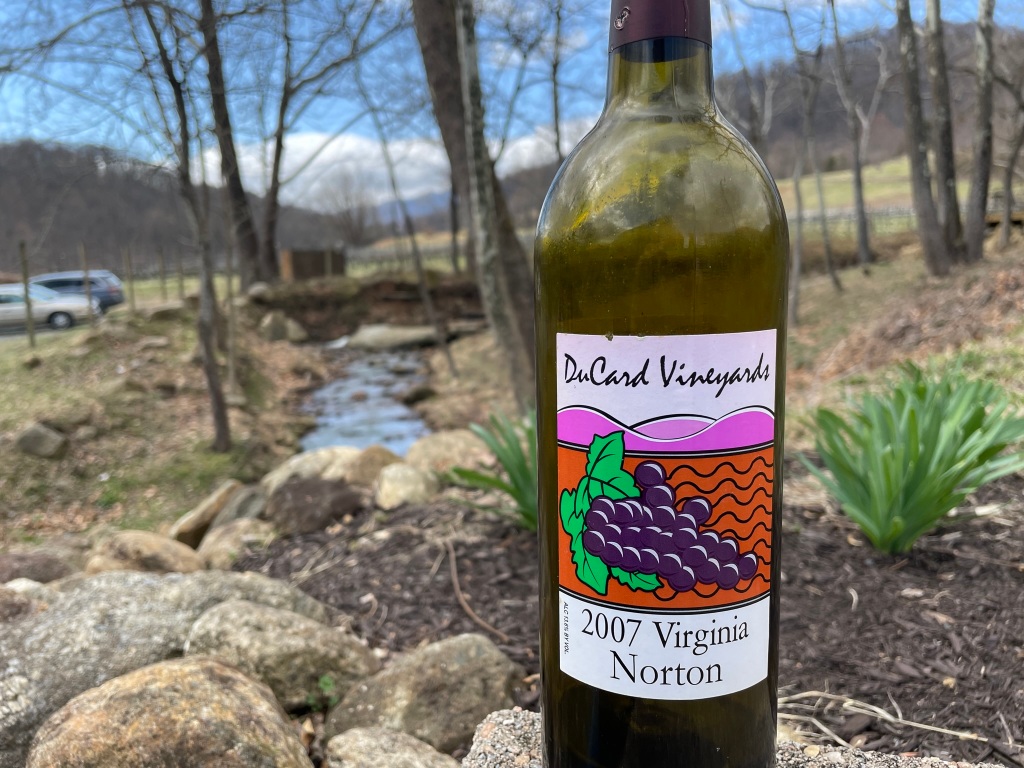Have you tried wine made with the norton grape lately? If you say, “I had it a few years ago and wasn’t a fan,” you’re missing out.
Earlier this year, Chrysalis Vineyards’ 2021 Locksley Reserve became the first norton to ever receive a Gold medal from the Virginia Governor’s Cup wine competition. On top of that, The Omni Homestead Resort now hosts an annual Norton Cup Challenge, and competition organizer Fred Reno has devoted a series of podcasts dedicated to this grape. These accolades are the direct result of winemakers treating Norton as a ‘serious wine’.
Norton’s high acidity and unique flavor profile makes it a love-it or hate-it wine amongst consumers. Growers, however, are willing to overlook these issues due to norton’s ability to endure difficult weather and its natural disease resistance, minimizing the need for chemical sprays.

Therein is the reason why norton is underappreciated, wrote Jason Murray of Arterra Wines.
“Just because norton is tough doesn’t mean it doesn’t require care. Many winegrowers tend to take their norton for granted, neglectfully managing the crop and canopy, or planting it in the worst spots in the vineyard.”
The growing number of extreme weather events is another reason why many growers are giving norton a second look. In describing norton’s place in his vineyard, owner Scott Elliff of DuCard Vineyards used a football analogy.
“Think of an NFL draft. Do you draft based on their current performance despite having a limited ceiling, or on their long-term potential? Smart owners do a bit of both. Our vinifera have great potential, but sometimes they’re like a star athlete that’s injury prone. But norton is reliable year-after-year.”

While its sustainability is perhaps norton’s greatest strength, it’s unfair to assume norton growers are simply hedging their bets in the vineyard. Winemakers are also learning to tease out its best expressions in the cellar, making today’s nortons better than ever.
The Origin of “Virginia’s Grape”
Few realize norton was the original rockstar grape of the Virginia wine industry.
According to the book The Wild Vine, norton was ‘born’ in 1821, in a Richmond nursery owned by horticulturalist Dr. Daniel Norton. Norton became one of America’s most prominent grapes over the following decades, largely due to its immunity to the phylloxera louse which was then devastating vineyards around the globe. In 1873, a norton made near St. Louis was declared the “best red wine of all nations” at a worldwide competition in Vienna.
There’s still debate on where to place norton amongst the various species of grapes. Is it a ‘hybrid’; aka the child of Vitis aestivalis (American) and Vitis vinifera parents? Or should it be referred to as an ‘American’ grape? While it’s still sometimes referred to as a hybrid, most experts feel norton’s resiliency strongly suggests it’s far closer to its American DNA than any European relatives.
Despite its early popularity, by the early-20th century norton had disappeared. Growers discovered grafting American grape rootstock on vinifera vines allowed them to survive phylloxera, leading to a renaissance in vinifera plantings. The advent of prohibition doomed Virginia’s remaining norton.

Fortunately, the grape survived in Missouri, and returned to its ancestral home thanks to Dennis Horton of Horton Vineyards. Norton was further popularized by Jenny McCloud of Chrysalis, which today owns the single largest norton planting in the world.
The story of DuCard’s norton vines demonstrates both how this grape has often been treated, and how growers are finding ways to improve its quality.
According to a recent podcast interview with Fred Reno, Scott planted norton at Dennis’ recommendation. During a visit, Dennis pointed to a block at the bottom of a swale and told him, “Just put the norton down there. It won’t care; it’ll do perfectly fine. You won’t have any trouble with it and it will be a consistent producer.”
By Scott’s own admission, his first few norton vintages were rough. Its wines were too acidic, too ‘untamed.’ Since adjusting grapes in the cellar wasn’t DuCard’s style, Scott looked for a solution in the vineyard.
DuCard winemaker Julien Durantie hypothesized that moving to a unique modified open lyre system resulted in better chemistry in the grapes. Their experimentation must have paid off, as DuCard’s 2017 Norton was selected as the winner of the inaugural Norton Cup in 2022.
Winemaker Chelsey Blevins of Fifty-Third Winery and Vineyard likewise noted the impact proper care has on wine quality. During her own interview she explained to Fred, “I think why nortons have gotten a bad rap is people have been planting it in not ideal locations, and not necessarily giving it the TLC it needs in the vineyard. They’re like, ‘oh, it’s a hybrid, it can handle this.’ But I think if you give it a little extra love and attention out in the vineyard and winery, you’re going to make a better wine out of it.”
Many of Virginia’s most acclaimed norton producers have also learned to smooth their wines, usually with a bit of blending. The Lockley Reserve is 80% norton, but the remainder is tannat and petit verdot. DuCard adds cabernet franc to its norton.
Chelsey takes norton blending a step further. Since 2021 she’s released a wine named Arrowhead, which usually hovers around 70% chambourcin and 30% norton.
Arterra takes a different tactic. One of Jason’s experiments has been to age his 2020 “Büyükbaba” in a clay amphora, giving it an Old World vibe. While he’s happy with the result, Jason readily admits he doesn’t think the winemaking is nearly as important as the growing conditions. “Good fruit, given time, will make great wine and will not require correcting anything,” he told his audience at a blind tasting of different nortons.
Try any of these nortons and tell them what you think!


Spot on. I was a hater until recently, and I have a ton of hope for this grape in the coming years!!!
LikeLiked by 1 person